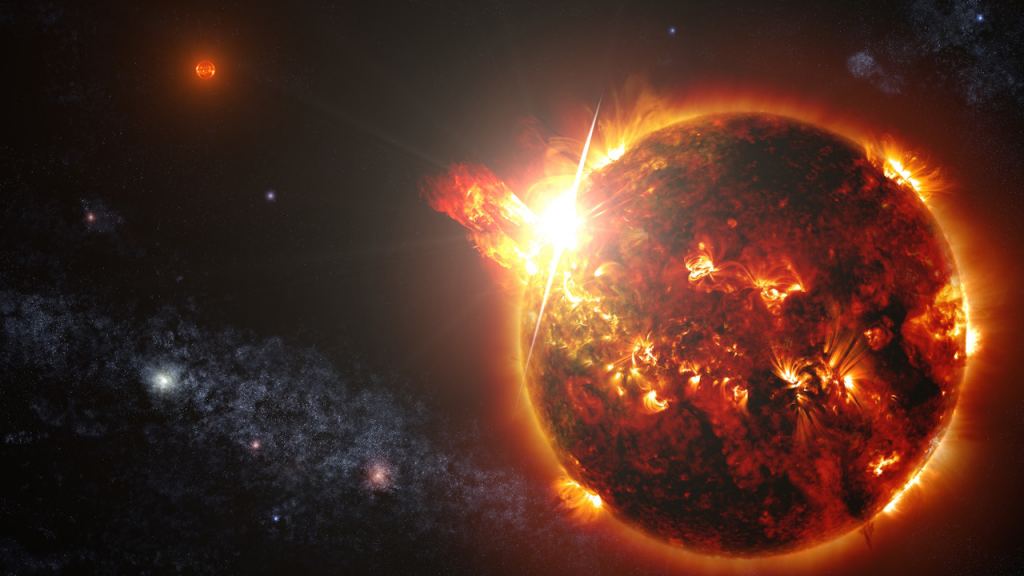Our closest stellar neighbour is Proxima Centauri, a small red dwarf star about 4.2 light years away from us. It's the third member of the Alpha Centauri group, and even though it's so close, it can't be seen with the naked eye. In 2016 astronomers discovered a planet orbiting Proxima Centuari, named Proxima Centauri b. That planet was confirmed only a few days ago.
Now, astronomers have confirmed the existence of a second planet, Proxima Centauri c.
The presence of this second planet was reported in a paper back in April. That paper is titled " A Preliminary Mass for Proxima Centauri C *." It was published in Research Notes of the AAS. Fritz Benedict, lead author of the work, recently presented these results at the 236th meeting of the American Astronomical Society.
Most exoplanets are found using the transit method, where sensitive instruments detect the drop in starlight caused by a planet passing in front of its star. But that only works when those planets are lined up with our observing position. The Proxima Centauri planets were found using the radial velocity method.
Even though stars are much more massive than their planets, the planets still exert gravitational force on the star, tugging it. The radial velocity method measures the star's response to that tug, and that can tell astronomers a lot.
In 1999, astronomers used the Hubble's Fine Guidance Sensor 3 to study Proxima Centauri (PC) astrometrically. At that time, they established an upper mass limit for the first planet, PC b, of 0.8 Jupiter masses. They also established an upper orbital period limit of fewer than 1000 days. Now that radial velocity has revealed the presence of another planet, PC c, with an orbital period of 1900 days, scientists re-examined all of the data for PC b.
With all of this data, scientists now know about the PC system's parallax, motion, and combined mass.
But the team behind this new work didn't stop there. They also used the SPHERE instrument on the VLT to get a more accurate mass measurement for PC c. A key figure behind this is astronomer Fritz Benedict of the McDonald Observatory. Benedict and his team found that the new planet Proxima Centauri c, is about seven times more massive than Earth.
But in any case, they now know that our newest neighbout, Proxima Centauri c, is real.
There were some discrepancies in the different measurements of PC c. In a 2020 article in Nature Astronomy, Paul Woods said that "...the detection is not fully certain because the candidate's motion does not fit with the current best measurement of the astrometric motion of the host star."
Woods also said that PC c appears to be five times the size of Jupiter, much larger than Benedict and his team suggested. "A possible solution for the discrepancy is that the planet candidate is surrounded by dust clouds or a system of expansive rings much like Saturn's," he suggested.
That may very well be true, but for now, we have no way of knowing. Future telescopes will likely answer that questiong. But size discrepancies aside, it looks like PC c is real, and we have a new neighbout.
The confirmation of Proxima Centauri c is really because of the dogged determination of astronomer Fritz Benedict. By combining three different data sets, he proved the existence of the planet, and constrained both its mass and its orbit. "Basically, this is a story of how old data can be very useful when you get new information," Benedict said in a press release. "It's also a story of how hard it is to retire if you're an astronomer, because this is fun stuff to do!"
The question of habitability always comes into play with these announcements. The newest planet, Proxima Centauri c, is likely too cold. But we don't really know for sure. PC b is similar in mass to Earth and appears to be in its star's habitable zone.
But the question is, do red dwarfs even have habitable zones? Red dwarfs can flare violently, and can blast their planets with intense radiation. It's doubtful that anything could survive that.
But that doesn't mean we know for sure. Habitable or not, it seems likely that whenever, or if ever, humanity figures out interstellar travel, Proxima Centauri will be our first destination.
The Breakthrough Starshot Initiative aims to send a light-sail spacecraft to Proxima Centauri in the next generation. It's too soon to say how realistic that is, but one thing's for sure: if they do get there, we'll finally know the true nature of that star system and the planets that reside there.
 Universe Today
Universe Today




